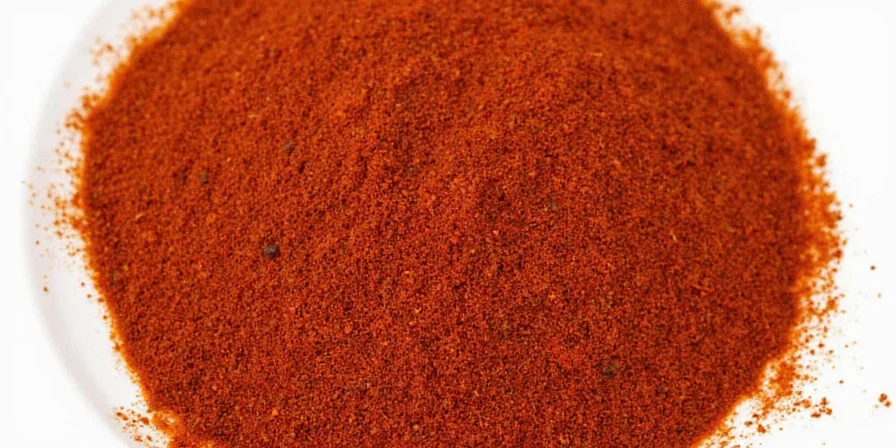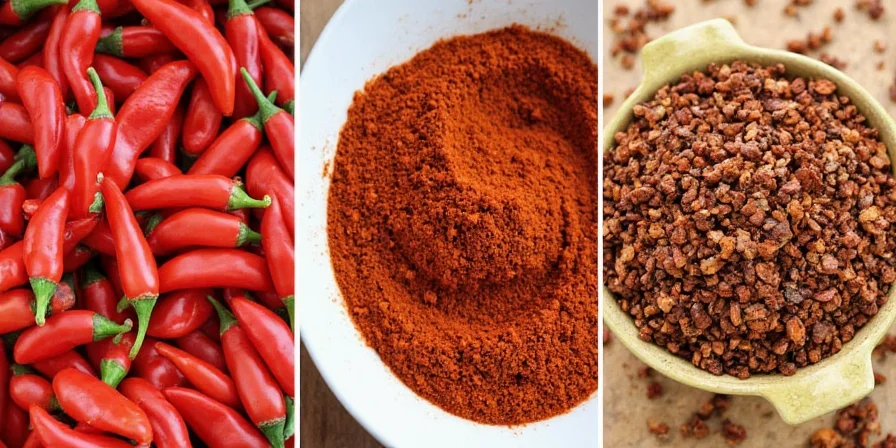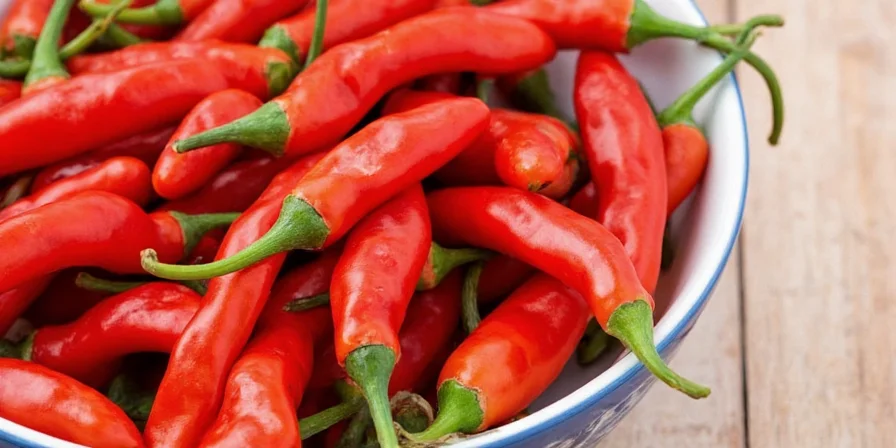When You Need an Ancho Chili Substitute: Guajillo Peppers Are Your Best Immediate Replacement
Guajillo peppers provide the closest match to ancho chili's mild heat (1,000-2,000 SHU) and thickening properties. Use a 1:1 ratio in tomato-based sauces where ancho's viscosity matters most. For mole recipes requiring chocolate compatibility, mulato peppers work better despite slightly higher heat (2,500-3,000 SHU).

Why Most Substitution Advice Fails (And How to Fix It)
Ancho chili serves three critical functions: mild heat (1,000–2,000 SHU), thickening body when blended, and complex earthy-sweet notes. Most substitution failures happen because home cooks focus solely on flavor while ignoring textural roles. In mole sauces where ancho provides viscosity, New Mexico chile works better than chipotle despite flavor differences. Understanding these functional requirements prevents dish-breaking errors.

Top 5 Ancho Chili Substitutes by Recipe Need
- Guajillo Pepper (Best Overall): Optimal for acidic sauces needing viscosity. Its berry-like tang cuts through tomato bases while providing similar thickness. Use 1:1 ratio in adobos.
- Mulato Pepper (Mole Specialist): Best for chocolate-based moles requiring caramelization. Sweeter with lower acidity than ancho, prevents bitterness in slow-cooked dishes.
- New Mexico Chile (Texture Match): Ideal structural substitute when flavor neutrality is key. Matches ancho's thickening capacity in soups without altering taste.
- Chipotle in Adobo (Smoke Alternative): Reserve for smoke-forward applications. Dilute with tomato paste (1 chipotle : 2 tbsp paste) to replicate body and reduce heat.
- Paprika Blend (Emergency Fix): Blend 1 tsp smoked paprika + 1 tsp tomato paste + pinch of oregano for volume and earthiness when nothing else is available.

Ancho Chili Substitute Comparison Chart
| Substitute | Heat (SHU) | Texture Contribution | Best Functional Match |
|---|---|---|---|
| Ancho (Reference) | 1,000–2,000 | High viscosity when blended | All-purpose |
| Guajillo | 2,500–5,000 | Moderate thickness | Tomato-based sauces |
| Mulato | 2,500–3,000 | Medium viscosity | Chocolate moles |
| New Mexico | 1,000–1,500 | High viscosity | Structural replacement |
| Chipotle | 5,000–10,000 | Low viscosity | Smoke-forward dishes |
| Paprika Blend | Varies | Requires augmentation | Emergency texture fix |
Pro Substitution Framework: Beyond 1:1 Swaps
- Identify the primary role in your recipe: thickener (use New Mexico), flavor carrier (use mulato), or acid balancer (use guajillo).
- Adjust ratios by function: For texture replication, blend substitutes with 15g cooked tomato per pepper to mimic ancho's fleshiness.
- When using paprika, add 1/4 tsp cornstarch per teaspoon to replicate ancho's thickening effect.
- Test heat levels by steeping substitutes in broth first - actual SHU varies significantly by crop year.
- Never substitute chipotle 1:1 - its concentrated heat requires at least 1/3 reduction.

Solving Common Substitution Problems
"I have fresh poblano peppers - can I use them instead of ancho chili?"
Yes, but roasting and peeling is essential to develop comparable depth. Use 2 fresh poblano peppers per dried ancho for equivalent volume after cooking down. This works well for sauces but won't replicate the concentrated flavor of dried anchos in spice rubs.
"Which substitute best replicates ancho's thickening ability in my failed mole sauce?"
New Mexico chile provides the closest textural match. Simmer blended peppers 5 minutes longer than ancho to achieve identical viscosity in sauces. Add 1 tsp tomato paste per pepper if using ground alternatives.
"How do I adjust heat levels when substituting guajillo for ancho?"
Start with 20% less guajillo than ancho called for, then incrementally add while tasting. Guajillo's higher heat range (2,500-5,000 SHU vs ancho's 1,000-2,000) means small adjustments make big differences.
"What's the biggest mistake home cooks make with ancho substitutions?"
Ignoring texture requirements. Ancho's flesh provides body that pure powder substitutes can't replicate - always include a viscosity agent like tomato paste or cornstarch with ground alternatives. This prevents watery sauces and failed emulsions.
Final Substitution Strategy
Successful ancho chili substitution requires matching functional roles before flavor. Prioritize texture and structural requirements first, then adjust for taste. Keep this strategic framework handy for when pantry shortages strike - your sauces, stews, and moles will maintain authentic character without the original ingredient. When in doubt, guajillo peppers provide the most versatile immediate replacement for most recipes requiring ancho chili.












 浙公网安备
33010002000092号
浙公网安备
33010002000092号 浙B2-20120091-4
浙B2-20120091-4